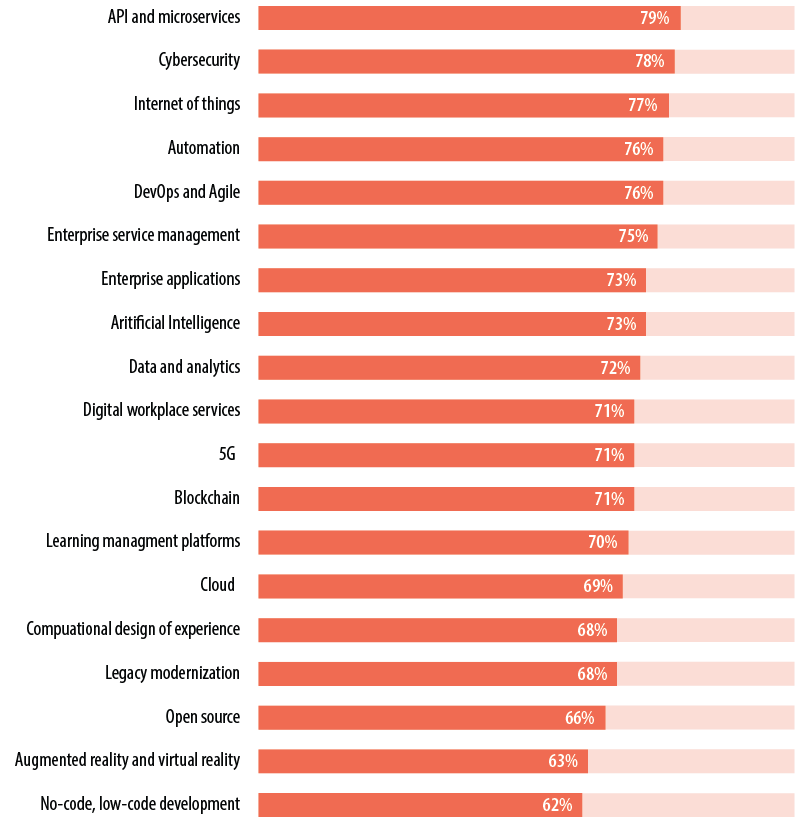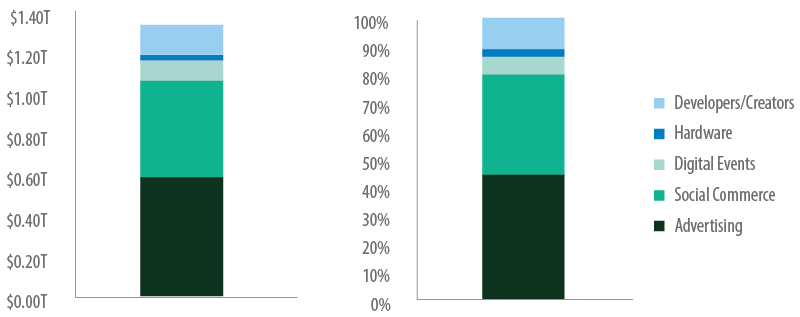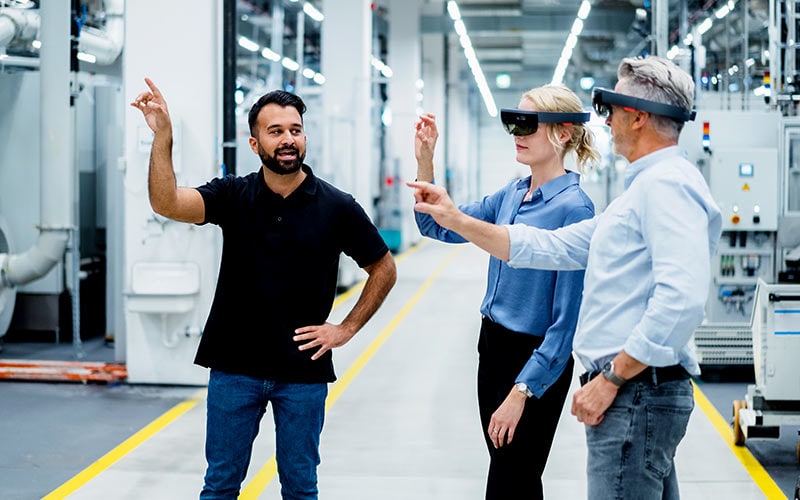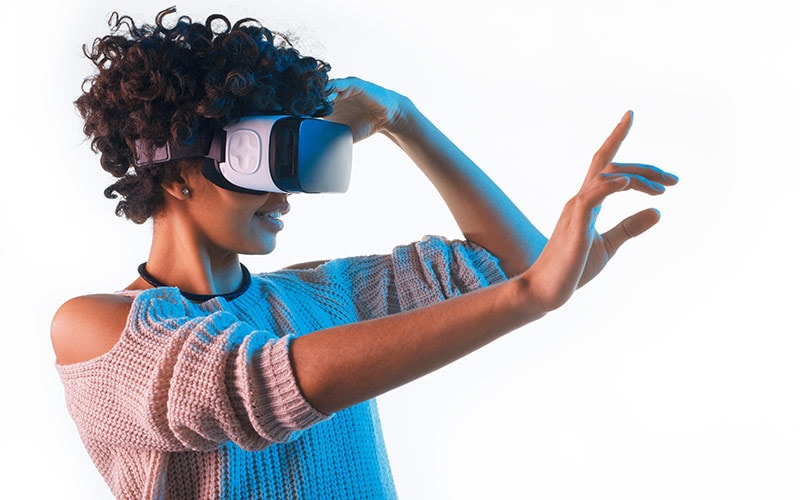Insights
- Organizations are already deploying the technologies they will need to create metaverse experiences
- Adopting some metaverse technologies could help reduce firms’ carbon footprint
- While firms are building metaverse-adjacent experiences, more needs to be done to create ‘the metaverse’
- There are some profound ethical questions to consider, from safeguarding to environmental concerns
- There is more to ‘the metaverse’ than Facebook and other big tech platforms
- Building the metaverse will require many different talents
It’s a truism that the metaverse isn’t a new concept. Evangelists point at early iterations of a virtual world such as Second Life, the persistent online world of the early noughties; the world described in the novel and then the movie Ready Player One, and cyberpunk texts such as Snow Crash. Multi-player online games such as World of Warcraft, Eve Online and, more recently, Red Dead Redemption II are more current examples, while the Australian anthropologist Genevieve Bell also considers the 19th-century industrial exhibitions and the mid-century theme parks to be proto-metaverses that offer signposts for the 21st-century iteration.1
If we consider immersive games to be an early iteration of the metaverse, then the steady growth in the time people spend gaming also points towards us being poised to enter the metaverse age. The NPD Group reported2 at the end of 2021 that users in the US spent 14.8 hours a week in games in 2020, rising to 16.5 hours in 2021. And that growth came from older gamers in the US, with the NPD group noting that people aged 45-64 saw a dramatic increase in hours spent gaming – and also in returning to gaming.
Accelerated growth in gaming is due in large part to the pandemic, but it’s also the case that the pandemic encouraged people who’d previously been reluctant to use tech to take it up, as Peter Rinderud, Ericsson’s senior statistics researcher notes.3 Expanding the cohort of those comfortable with using tech helps create an audience who will be open to more immersive experiences – and that by definition means greater commercial opportunities for businesses that are ready to create good metaverse experiences.
Organizations are already deploying the technologies they will need to build those metaverse experiences. In Infosys’s Digital Radar report, we found that of the businesses surveyed, digital initiatives such as AI, data and analytics, blockchain, and low-code/no-code development have already reached a two-thirds adoption level. Building on these technologies will help companies prepare for the metaverse.
Building on technologies such as AI and analytics will help companies prepare for the metaverse
In short, we have already entered the metaverse age, with businesses offering metaverse-adjacent experiences to a growing potential user base. And the boost the concept was given when Facebook renamed its parent company to Meta, clearly signalling that it is staking a great deal of money and its reputation on building “the metaverse”, is an important step towards the wider metaverse to come.
Figure 1. Digital initiatives have reached a two-thirds adoption level across companies

Source: Infosys Knowledge Institute
What is the metaverse?
We can think of the metaverse as a world where humans are connected to digital twins of themselves (and everything else imaginable), with identities and assets completely run by code and transferable across platforms.
In its simplest form, says Vishwa Ranjan, virtual and augmented reality leader at Infosys, the metaverse “can be thought of as the next iteration of the web”, where “lines are getting blurred between physical and digital worlds”.
In fact, what we think of as the metaverse is a confluence of technologies, from extended reality (XR), Internet of Things (IoT) and 5G connectivity, to graphics, displays and the cloud.
Meta is the name on everyone’s lips, but other big players are also in this space. Microsoft and Adobe are two of the big tech names, with Microsoft already previewing Mesh for Teams. This lets teams collaborate using their digital twins, or avatars – digital representations of themselves – in mixed reality. It will also allow organizations to build their own virtual spaces where they could onboard new hires or conduct townhalls, and facilitate use of virtual whiteboards and screens in a way similar to physical offices.
What are the opportunities of the metaverse?
The vision is that the metaverse will make professionals more productive, innovative, and successful. It will also meet people where they are in the user journey, with experiences that are more perceptive, sentient, and present.
The creation and wide adoption of the metaverse could also help reduce both organizations’ and individuals’ carbon footprints. Building digital twins of physical buildings in Nvidia’s Omniverse, for example, means designers and architects can model improving energy use in the real-world structure, measuring where to place solar panels and how to make air conditioning more efficient.
And while the pandemic means companies have got used to holding meetings and even large events via video-conferencing rather than in person, the experience will be richer in the metaverse, meaning business travel should be sharply reduced.
From a commercial point of view, retail is obviously one sector that will benefit by building experiences in the metaverse. Being able to offer immersive experiences to consumers across their entire ranges rather than being constrained by stock levels and premises is a clear benefit. Meanwhile the ability to gather ever richer data about customers, not only about their purchase history but also what they try on, how long they interact with items in virtual stores, how long they spend in owned digital spaces etc means that companies will be able to offer tailored and focused experiences to users to build loyalty.
Metaverse is expected to make professionals more productive, innovative, and successful
Sports organizations such as soccer and cricket teams are already offering “fan tokens” and NFTs to cement loyalty and offer enhanced interaction and experiences to supporters, although it’s worth noting that there is rising concern about how appropriate this is for their fanbases, which is likely in turn bring more regulatory scrutiny to this space.4
While the move to the metaverse has been going on for some time, the pandemic has accelerated that drive, says Ranjan: “Workplace, workforce and work-related challenges faced by companies, amplified by individual isolation in the past two years has led to a lot of experimentation in virtual presence, interaction, and socialization through extended reality technologies.”
What’s needed to build the metaverse?
Although we have entered the metaverse age, there is still more to build. Getting this ambitious vision off the ground is going to require huge investments in infrastructure, and will also need deep interoperability to fully realize that vision.
That means platform-agnostic standards not just to connect the various metaverses but also to manage ownership, use and trade digital assets across platforms and to manage identity and data securely. If that is achieved, then in theory companies and individuals should be able to collaborate within and across organizations.
Part of achieving this will be an ecosystem of low-code/no-code plugins that mean virtual spaces and applications can be built quickly, and then used across virtual spaces.
There is also the question of whether ordinary people are equipped to join the metaverse. At present, the hardware required to take part is niche and expensive. Statista reports5 that just 6m VR headset units were sold in 2021, with the global VR market being worth $4.8bn in the same year.
When considered in tandem with statistics such as the fact that more than 12% of Android devices around the world are using the deprecated version 9 (Android Pie) and a further 8.1% are still on version 8 (Oreo),6 getting users to the point where they have the modern hardware to participate in the metaverse has some way to go.
However, for those organizations that are poised to shift to the metaverse, the financial opportunities are clear. Asset manager Grayscale estimates that the metaverse will be a “trillion-dollar revenue opportunity across advertising, social commerce, digital events, hardware, and developer/creator monetization”.
Figure 2. Global metaverse potential total addressable market

Source: Grayscale Asset Management
What are the potential pitfalls of the metaverse?
Organizations building the metaverse will have to deal with some profound ethical issues. The metaverse promises to create spaces where experiences are built around individuals, but that will require access to a great deal of personal data. Given the trust issues that have emerged over the past few years thanks to scandals such as Cambridge Analytica7 and a growing reluctance to share data, organizations will have to show that they are committed to treating personal data with respect, and not as a commodity to be mined.
Trust also defines concerns about AI and algorithmic decision-making. The metaverse will rely heavily on those technologies, so companies will have to think about how they demonstrate that they are trustworthy and that their decision-making processes and algorithms won’t entrench inequalities.
Similarly, concerns around misinformation need to be addressed. Deepfakes – where AI is used to create convincing video hoaxes – are already hard to spot, and will be even more so in the metaverse.
As well as trust issues, it is of course true that the metaverse cannot replace the real thing, adds Rajan. “It only aspires to be the next best alternative to that.”
What can organizations build in the metaverse?
BMW’s digital twin of one of its German factories, built using Nvidia’s Omniverse8 brings together people from around the world, using avatars and digitalized robotics to simulate factory floor operations to test new workflows. Digital twins of factories could accelerate product design, development, and go-to-market processes.
In the retail space, giants such as Nike, Adidas, and Walmart have started rolling out digital products and virtual stores, with Nike having built NIKELAND in Roblox,9 the platform described as a cross between a videogame and a social media platform.
Walmart is also reportedly exploring ways to enter the metaverse,10 and many brands are looking at creating digital marketplaces to create and sell non-fungible tokens (NFTs), which are purely digital products.
While much of this will remind old hands of the early rush by brands to create virtual spaces in Second Life, Rajan notes that the current momentum is driven by “the demographic shift that has happened. The digital-native kids who grew up playing videogames are now entering the workforce, creating promising start-ups and taking prominent roles in the existing, emerging and disruptive new age companies.”
What do people get wrong about the metaverse?
With Facebook dominating much of the discourse about the metaverse, it’s tempting to think that Mark Zuckerberg’s vision, as he set out at Connect 2021,11 is the definitive vision. However, with the participation of so many stakeholders, from boutique coders to huge industry players, the metaverse should become a space enabled by a range of technologies that transcends any one company.
It’s also thought that the metaverse is about gaming, but while gaming has led on developing some of the technology and paradigms, from VR headsets to design, the metaverse is about much more than cartoonish avatars dispatching monsters. We’ve seen how business applications from retail to architecture will be able to build rich, immersive and – crucially – useful spaces for their customers, whether they’re someone looking for a customized pair of trainers or a multinational looking to design the most sustainable new building possible.
And finally, some think the metaverse is going to be one big virtual world. As we’ve seen, though, the metaverse is as much a platform for innovation and creation as it is a virtual space. Different spaces from a huge variety of businesses will be linked together by the underlying technologies.
Why is Infosys positioned well for the metaverse?
It’s clear that the metaverse will be built by pulling together a range of technologies, and it will also require many different types of talent, notes Vishwa Rajan. “Designers, artists engineers, and tools, both digital and physical, will be needed in envisioning, creating and scaling an end-to-end solution”, he says.
Infosys has already made investments in extended reality and blockchain technologies, thought to be two of the key building blocks of the metaverse, and has worked on both internal and external initiatives, building our Virtual Living Labs, an immersive world that showcases the next innovations and business models.
Infosys has already created and delivered immersive experiences that can be turned into metaverse offerings, such as a VR store for the Australian Open, which offered shopping and commerce options and experiences such as virtual try-on.
Infosys also created the Australian Open 360, where fans could watch the live broadcast of matches with friends in an immersive space.
Rajan points to the technologies that will be drawn together, from AR and VR to spatial computing, AI and machine learning, human-computer interaction, cybersecurity, cloud, 5G and Edge. “Infosys has made some strategic investments in these technologies and talent over the past five to 10 years that places it uniquely to help enterprises on their metaverse journey”, says Rajan. “Enterprises can count on our depth in business domains and expertise in immersive, interactive and experiential design for defining their use cases, business cases and execution roadmaps.”
References
- The metaverse is a new word for an old idea Genevieve Bell, Feb. 8, 2022, MIT Technology Review
- US continues to see growth in time and money spent on video games Mat Piscatella, Oct. 7, 2021, NPD Group
- Seniors and technology during Covid-19: the latest insights Peter Rinderud, Jan. 26, 2021, Ericsson Blog
- Special investigation: Socios ‘fan tokens’ – what they really are and how they work Joey D’Urso, Aug. 18, 2021, The Athletic
- Virtual reality (VR) – statistics & facts Thomas Alsop, Mar. 4, 2022, Statista
- Mobile operating system market share worldwide, June 2022, Statcounter
- Cambridge Analytica and Facebook: the scandal and the fallout so far Nicholas Confessore, April 4, 2018, New York Times
- NVIDIA, BMW, blend reality, virtual worlds, to demonstrate factory of the future Brian Caulfield, April 13, 2021, NVIDIA
- Into the metaverse: Nike creates ‘NIKELAND’ on Roblox Sanjana Shivdas, Nov. 18, 2021, Reuters
- Walmart is entering the metaverse: will more retailers follow? Kristi Waterworth, Jan. 20, 2022 The Motley Fool
- Connect 2021: Our vision for the metaverse Press release, Oct. 28, 2021, Meta





